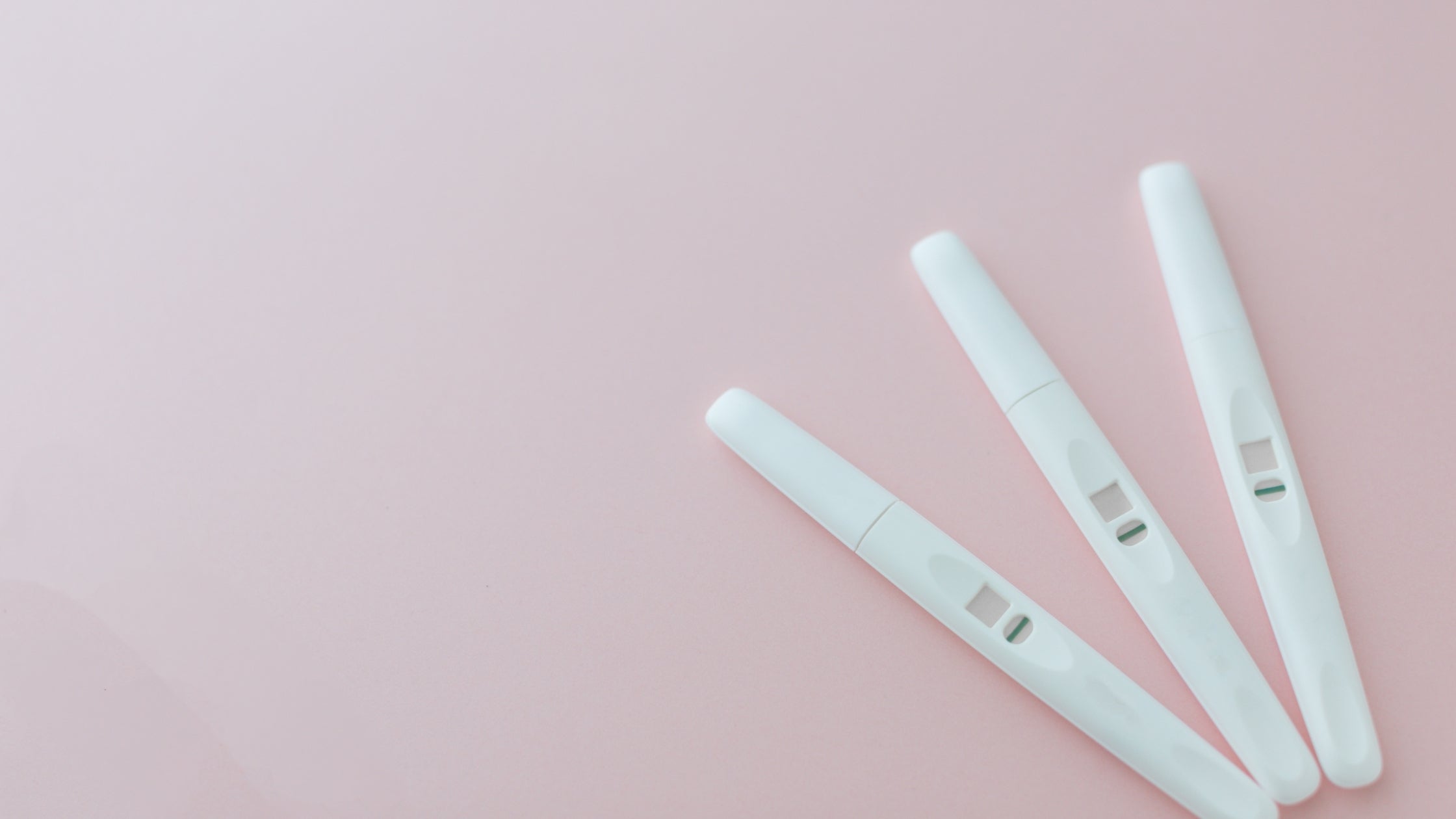
The Link Between Plastics and Fertility
A special thank you to Dr. Krista Lowe for writing this guest post & shedding some light on how endocrine disruptors impact fertility.
It can be frustrating when you and your partner are ready to bring a baby into the world and those two pink lines haven’t shown up on the pregnancy test yet. Fertility is complex and there are many factors that can contribute to your chances of pregnancy. Health conditions (such as PCOS, endometriosis, thyroid conditions, etc.) can affect your fertility status, which can leave a couple feeling out of control. It’s always important to know that your fertility status is not your fault! Today I am going to write about one specific lifestyle factor/habit to consider while trying to maximize your chances of becoming pregnant.
This being endocrine disruptors! Endocrine disruptors are a type of chemical that can interfere or mimic your own body's hormones. Endocrine disruptors can be found in: plastic bottles, containers, metal food cans, detergents, flame retardants, toys, cosmetics, and pesticides (phew!). Your endocrine system is your hormone system which includes things like your ovaries, testicles, thyroid and adrenals. It can be hard to review the exact impact of different endocrine disruptors on humans as people are usually exposed to different chemicals at the same time, however we do know that they can make a big impact on animals. Learning how the outside world affects animals can be the first step to understanding how things can also make an impact on humans.
So how can endocrine disruptors impact fertility?
1. Male fertility: Men’s overall sperm count has been on a decline estimated to be about 50 to 60% over the past 50 years and some research shows that endocrine disruptors (especially phthalate exposure and pesticide exposure) could be a couple of the factors contributing to this decline.
2. Female fertility: In Denmark there was an increased incidence of infertility in women who worked in the plastics industry. Certain EDC’s may cause changes in the menstrual cycle, impair ovarian function/development, and could affect IVF outcomes for those undergoing infertility treatments.
3. Effects in utero: Exposure to EDC’s may impact the reproductive health of future generations. Check out this video to learn more about the effects of EDC’s in utero!
What are some easy swaps to decrease your exposure:
- Water bottles/ coffee cups. Switch out your plastic water bottles/ coffee cups for glass or stainless steel bottles.
- Plastic wrap. Swap your plastic wrap for beeswax wrap!
- Plastic containers. Try to avoid heating your food in plastic containers and look for a container that is made out of glass or stainless steel.
- Receipts. Ask for an emailed receipt when possible as cash register receipts contain EDC’s.
- Cosmetics. Take a look at the ingredients in your cosmetics and swap out your products for ones that are free of EDC’s.
- Reduce pesticide exposure: dietary pesticide exposure may be one factor that could affect conception and fertility outcomes in women. Here is a great guide created by the EWG to help you decide which organic produce to prioritize!
- Eliminate fragranced products in your home, such as air fresheners, candles, and perfumes.
Don’t feel like you have to make these changes overnight and just remember to take small steps when evaluating your EDC exposure!
References
Bloom M, Whitcomb B, Chen Z, Ye A, Kannan K, Louis GB. Associations between urinary phthalate concentrations and semen quality parameters in a general population. Hum Reprod 2015;30:2645–2657.
Chiu YH, Gaskins AJ, Williams PL, Mendiola J, Jorgensen N, Levine H, Hauser R, Swan SH, Chavarro JE. Intake of fruits and vegetables with low-to-moderate pesticide residues is positively associated with semen-quality parameters among young healthy men. J Nutr 2016;146:1084–1092.
Chiu Y, Williams PL, Gillman MW, et al. Association Between Pesticide Residue Intake From Consumption of Fruits and Vegetables and Pregnancy Outcomes Among Women Undergoing Infertility Treatment With Assisted Reproductive Technology. JAMA Intern Med. 2018;178(1):17–26. doi:10.1001/jamainternmed.2017.5038
Emily Brehm, Jodi A Flaws, Transgenerational Effects of Endocrine-Disrupting Chemicals on Male and Female Reproduction, Endocrinology, Volume 160, Issue 6, June 2019, Pages 1421–1435, https://doi.org/10.1210/en.2019-00034
EWG (2021) EWG’s 2021 Shopper’s Guide to Pesticides in Produce. Retrieved from: https://www.ewg.org/foodnews/summary.php
Hagai Levine, Niels Jørgensen, Anderson Martino-Andrade, Jaime Mendiola, Dan Weksler-Derri, Irina Mindlis, Rachel Pinotti, Shanna H Swan, Temporal trends in sperm count: a systematic review and meta-regression analysis, Human Reproduction Update, Volume 23, Issue 6, November-December 2017, Pages 646–659, https://doi.org/10.1093/humupd/dmx022
Hougaard, Karin & Hannerz, Harald & Feveile, Helene & Bonde, Jens. (2009). Increased incidence of infertility treatment among women working in the plastics industry. Reproductive toxicology (Elmsford, N.Y.). 27. 186-9. 10.1016/j.reprotox.2009.01.003.
Jukic, A. M., Calafat, A. M., McConnaughey, D. R., Longnecker, M. P., Hoppin, J. A., Weinberg, C. R., Wilcox, A. J., & Baird, D. D. (2016). Urinary Concentrations of Phthalate Metabolites and Bisphenol A and Associations with Follicular-Phase Length, Luteal-Phase Length, Fecundability, and Early Pregnancy Loss. Environmental health perspectives, 124(3), 321–328. https://doi.org/10.1289/ehp.1408164
Pivonello, C., Muscogiuri, G., Nardone, A., Garifalos, F., Provvisiero, D. P., Verde, N., de Angelis, C., Conforti, A., Piscopo, M., Auriemma, R. S., Colao, A., & Pivonello, R. (2020). Bisphenol A: an emerging threat to female fertility. Reproductive biology and endocrinology : RB&E, 18(1), 22. https://doi.org/10.1186/s12958-019-0558-8
Rattan, S., Zhou, C., Chiang, C., Mahalingam, S., Brehm, E., & Flaws, J. A. (2017). Exposure to endocrine disruptors during adulthood: consequences for female fertility. The Journal of endocrinology, 233(3), R109–R129. https://doi.org/10.1530/JOE-17-0023
Ronit Machtinger, Raoul Orvieto (2014) Bisphenol A, oocyte maturation, implantation, and IVF outcome: review of animal and human data. Reproductive BioMedicine Online. Volume 29, Issue 4, 2014, Pages 404-410,ISSN 1472-6483: https://doi.org/10.1016/j.rbmo.2014.06.013.
Ted Mendum, Emily Stoler, Helen VanBenschoten & John C. Warner (2011) Concentration of bisphenol A in thermal paper, Green Chemistry Letters and Reviews, 4:1, 81-86, DOI: 10.1080/17518253.2010.502908
About the Author

Dr. Lowe is passionate about working with her patients to help them better understand their health and it’s role in providing a better quality of life.
Dr. Lowe obtained a Bachelor of Science degree with a combined major of Biology and Psychology at the University of Victoria (UVIC). After graduating from UVIC, she went on to pursue her Doctorate in Naturopathic Medicine at the Boucher Institute of Naturopathic Medicine in New Westminster. Dr. Lowe returned to Victoria to start her practice, so that she could help others with their health and wellness.
Dr. Lowe is a member in good standing with the Canadian Association of Naturopathic Doctors, College of Naturopathic Physicians of BC, and the BC Naturopathic Association.
For more information about Krista Lowe check out her website:


